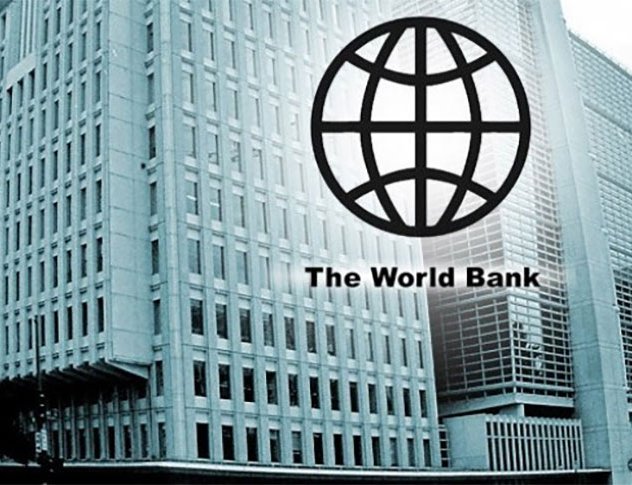
Nepal's economic growth is projected to be 3.9% in fiscal year 2023/24 and 5.0% in 2024/25, despite facing several challenges. The World Bank's Global Economic Prospect states that growth is expected to increase in Nepal due to monetary policy easing and the delayed effects of lifting import restrictions.
In 2023, growth in South Asia (SAR) slightly slowed to 5.7 percent. However, it remains the fastest among emerging market and developing economy regions.
This is largely due to a robust expansion in India, which accounted for more than three-fourths of the regional output. Excluding India, activity was more subdued.
In India, despite some slowing, a strong performance in 2023 was driven by robust public investment growth and vibrant services activity. Merchandise exports slowed due to weak external demand, but domestic demand for consumer services and exports of business services sustained India’s economic growth.
In Bangladesh,growth is estimated to have slowed in FY2022/23 (July 2022 to June 2023), as activity was hampered by import restrictions and rising material and energy costs, as well as mounting external and financial pressures. The impact of earlier import restrictions, which were subsequently lifted, along with previous monetary policy tightening, weighed on growth in Nepal.
Output in Pakistan is estimated to have contracted during FY2022/23 (July 2022 to June 2023). Inflation remained elevated, partly reflecting large currency depreciation in early 2023.
However, towards the end of 2023, Pakistan's currency exhibited signs of stabilization. Output in Sri Lanka is also estimated to have declined in 2023, while there has been progress in sovereign debt restructuring. In Afghanistan, despite declining food prices in 2023, poverty rates remained high, exacerbated by strong earthquakes in October 2023.
Outlook: Growth in SAR is expected to edge slightly lower to a still-robust 5.6 percent pace in 2024, before firming to 5.9 percent next year. Domestic demand, including public consumption and investment, will remain major drivers of economic growth. A pickup in external demand, albeit still subdued, is also expected to contribute to growth.
In India, growth is expected to edge up to 6.4 percent in FY2024/25 (April 2024 to March 2025) after softening to 6.3 percent in FY2023/24. Investment is envisaged to decelerate marginally but remain robust, supported by higher public investment and improved corporate balance sheets.
In Bangladesh, growth is forecast to slow to 5.6 percent in FY2023/24. Inflation is likely to remain elevated, weighing on private consumption. Import restrictions are expected to continue and impede private investment.
The outlook in Pakistan remains subduedfor FY2023/24. Monetary policy is expected to remain tight to contain inflation, while fiscal policy is also set to be contractionary. The outlook in Sri Lanka remains uncertain, amid debt restructuring negotiations, particularly with private creditors.
Investment related to the tourism sectorwill support growth in Maldives, while the commissioning of a new hydro plant in Bhutan is expected to contribute to a pickup in growth in the next fiscal year.
Risks: Risks to the forecast remain tilted to the downside, with the most pressing concerns revolving around higher energy and food prices caused by an escalation of the conflict in the Middle East and adverse spillovers stemming from larger-than-expected increases in policy rates in advanced economies.In addition, elevated external and fiscal financing needs, the growing frequency and severity of extreme weather events, and sharper-than-expected growth slowdown in trading partners also pose risks to the region. Heightened uncertainty around elections in 2024 in some countriesis also a downside risk in the region. However, the implementation of growth-friendly policies after elections could improve growth prospects.
As the world nears the midpoint of what was intended to be a transformative decade for development, the global economy is set to rack up a sorry record by the end of 2024—the slowest half-decade of GDP growth in 30 years, according to the World Bank’s latest Global Economic Prospects report.
By one measure, the global economy is in a better place than it was a year ago: the risk of a global recession has receded, largely because of the strength of the U.S. economy. But mounting geopolitical tensions could create fresh near-term hazards for the world economy. Meanwhile,the medium-term outlook has darkened for many developing economies amid slowing growth in most major economies,sluggish globaltrade, and the tightest financial conditions in decades. Global trade growth in 2024 is expected to be only half the average in the decadebefore the pandemic. Meanwhile, borrowing costs for developing economies—especially those with poor credit ratings—are likely to remain steep with global interest rates stuck at four-decade highs in inflation-adjusted terms.
Global growth is projected to slow for the third year in a row—from 2.6% last year to 2.4% in 2024, almost three-quarters of a percentage point below the average of the 2010s. Developing economies are projected to grow just 3.9%,more thanone percentage pointbelow the average of the previous decade. After a disappointing performance last year, low-income countries should grow 5.5%, weaker than previously expected. By the end of 2024, people in about one out of every four developing countries and about 40% of low-income countries will still bepoorer than they were on the eve of the COVIDpandemic in 2019.In advanced economies, meanwhile, growth is set to slow to 1.2% this yearfrom 1.5% in 2023.
“Without a major course correction, the 2020s will go down as a decade of wasted opportunity,” said Indermit Gill,the World Bank Group’s Chief Economist and Senior Vice President. “Near-term growth will remain weak, leaving many developing countries—especially the poorest—stuck in a trap: with paralyzing levels of debt and tenuous access to food for nearly one out of every three people. That would obstruct progress on many global priorities.Opportunities still exist to turn the tide. This report offers a clear way forward: it spells out the transformation that can be achieved if governments act now to accelerate investment and strengthen fiscal policy frameworks.”
To tackle climate change and achieve other key global development goals by 2030, developing countries will need to deliver a formidable increase in investment—about $2.4 trillion per year. Without a comprehensive policy package, prospects for such an increase are not bright. Percapita investment growth in developing economies between 2023 and 2024 is expected to average only 3.7%, just over half the rate of the previous two decades.
The report offers the first global analysis of what it will take to generate a sustained investment boom, drawing from the experience of 35 advanced economies and 69 developing economies over the past 70 years. It finds that developing economies often reap an economic windfall when theyaccelerate percapita investment growth to at least 4% and sustain it for six years or more: the pace of convergence with advanced-economy income levels speeds up, the poverty rate declines more swiftly, and productivity growth quadruples.Other benefitsalso materialize during these booms:among other things, inflation falls, fiscal and external positions improve, and people’s access to the internet expands rapidly.
“Investment booms have the potential to transform developing economies and help them speed up the energy transition and achieve a wide variety of development objectives,” said Ayhan Kose, the World Bank’s Deputy Chief Economist and Director of the Prospects Group. “To spark such booms, developing economiesneed to implement comprehensive policy packages to improve fiscal and monetary frameworks, expand cross-border trade and financial flows, improve the investment climate, and strengthen the quality of institutions. That is hard work,but many developing economies have been able to do it before. Doing it again will help mitigate the projected slowdown in potential growth in the rest of this decade.”
The latest Global Economic Prospects also identifies what two-thirds of developing countries—commodity exporters specifically—can do to avoid boom-and-bust cycles.The report finds that governments in these countries often adopt fiscal policies that intensify booms and busts. When increases in commodity prices boost growth by 1 percentage point, for example, governments increase spending in ways that boost growth by an additional 0.2 percentage point. In general, in good times, fiscal policy tends to overheat the economy. In bad times it deepens the slump. This “procyclicality” is 30 percent stronger in commodity-exporting developing economies than it is in other developing economies.Fiscal policies also tend to be 40 percent more volatile in these economies than in other developing economies.
The instability associated with higher procyclicality and volatility of fiscal policy produces a chronic drag on the growth prospects of commodity-exporting developing economies. The drag can be reduced—by putting in place a fiscal framework that helps discipline government spending,by adopting flexible exchange-rate regimes, and by avoiding restrictions on the movement of internationalcapital.On average, these policy measures could help commodity exporters in developing economies boost their per capita GDP growth by as much as 1 percentage point every four or five years. Countries can also benefit by building sovereign-wealth funds and other rainy-day funds that can be deployed quickly in an emergency.
- MELAMCHI WATER SUPPLY: No Interruption During Monsoon
- Jun 25, 2025
- KOREAN RETURNEES: Successful Integration
- Jun 25, 2025
- UPPER TRISHULI-1: Engaging With Local
- Jun 25, 2025
- IME GROUP: Twenty Five Years Of Journey
- Jun 24, 2025
- NEPAL’S AIR POLLUTION: A Growing Health Concern
- Jun 24, 2025















